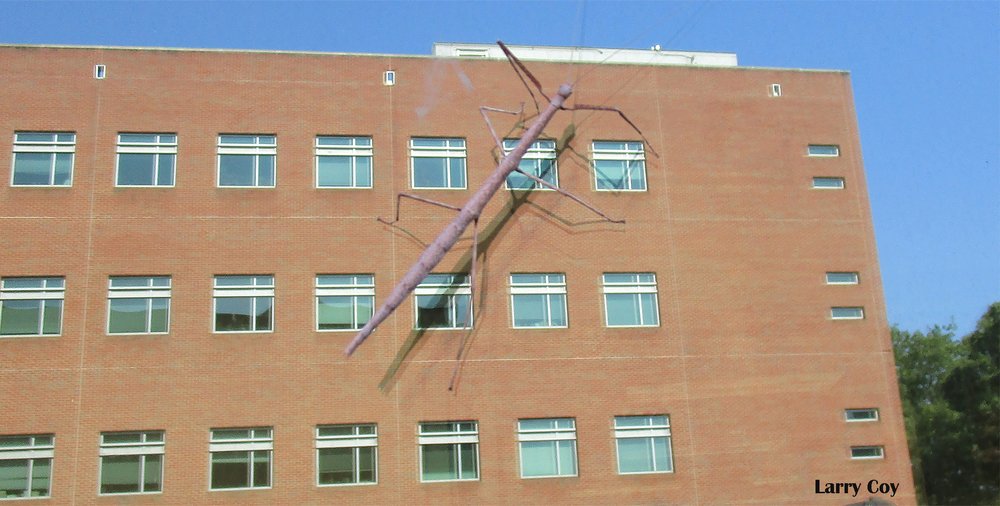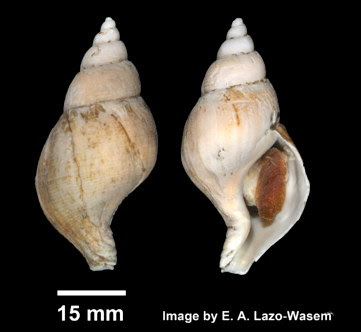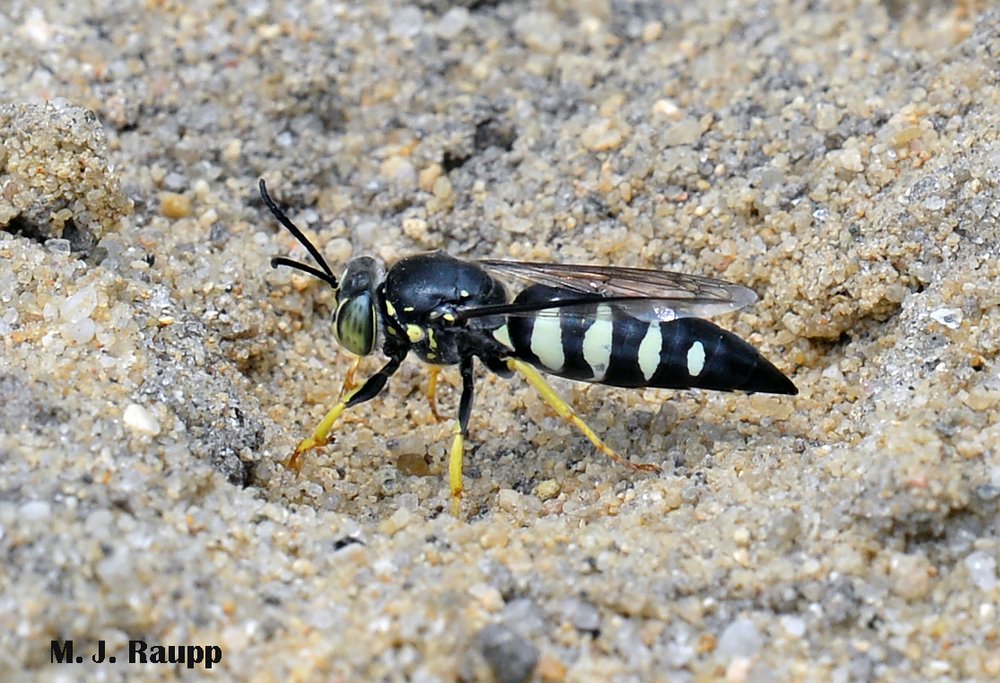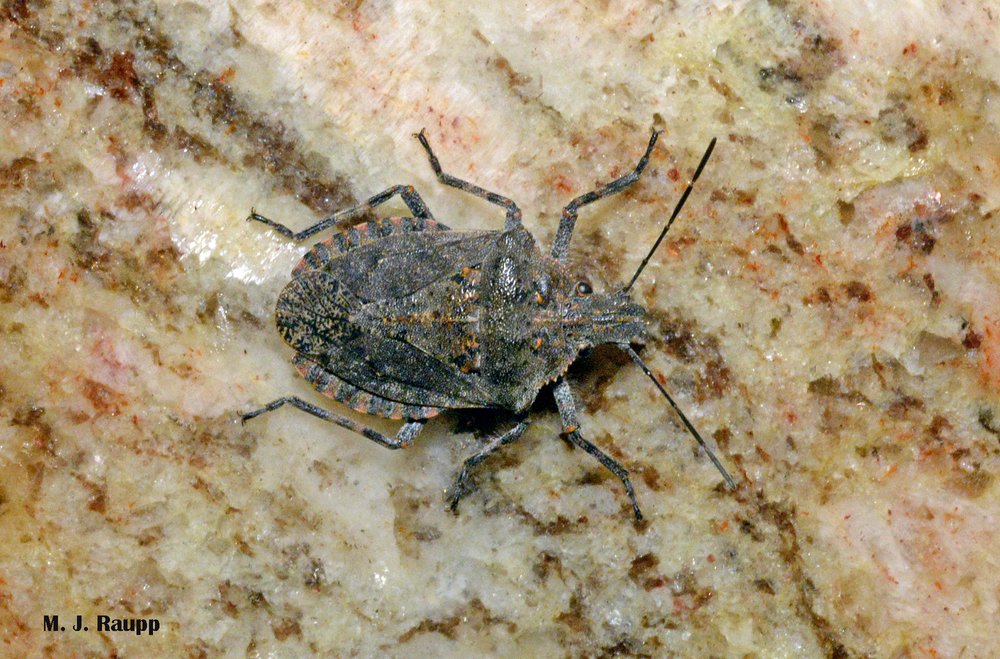
Stink bugs like this four-humped stink bug may enter homes with firewood.
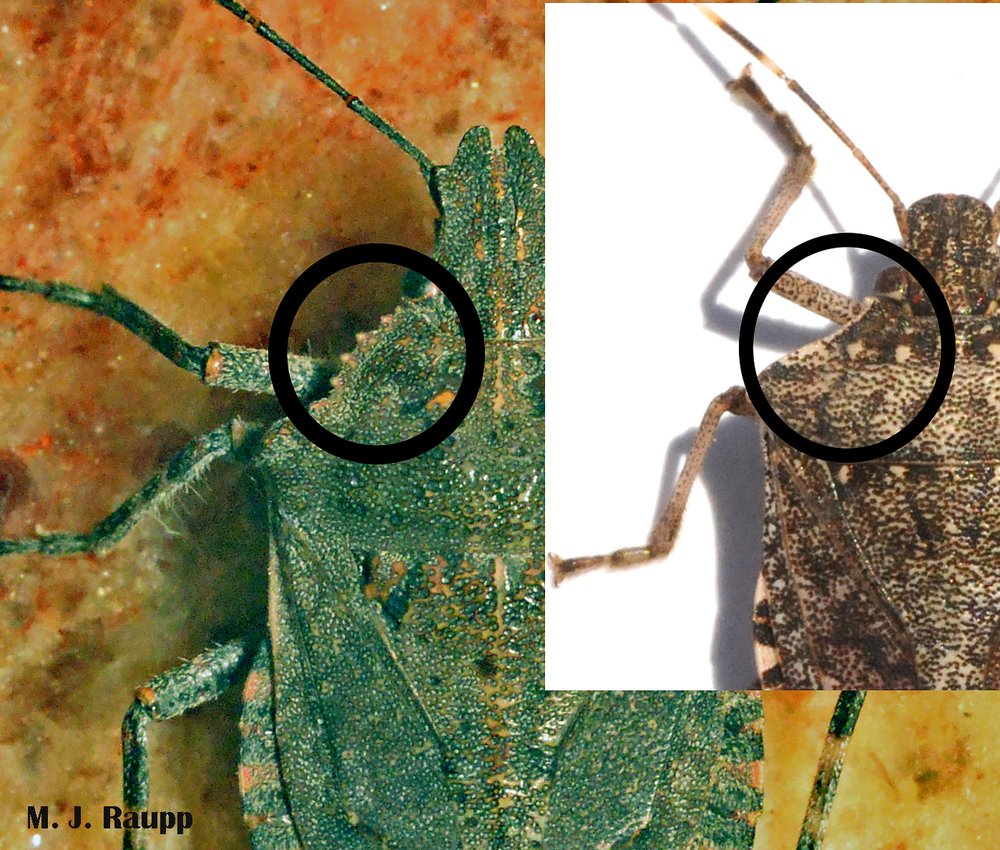
To differentiate four-humped stink bugs (left) from brown marmorated stink bugs (insert right) look at the shoulders. Four-humped stink bugs have spiny shoulders while shoulders of brown marmorated stink bugs lack spines.
In a previous episode we visited a domestic invasion by the nefarious brown marmorated stink bugs. This winter a different six-legged stinker has graced my kitchen, where something seems magical about the kitchen counter. On a chilly morning a few weeks ago, I was greeted by another member of the stink bug clan prancing across the kitchen counter, the four-humped stink bug which also goes by the name of rough stink bug. No, four-humped does not refer to some strange mating behavior nor does rough allude to rude conduct in polite company. These common names refer to some Bactrian camel-like adornments on the back of the stink bug and rows of spines at the margins of its “shoulders” just behind the head. Four-humped stink bugs are predominately arboreal, dining on a wide variety of trees, shrubs and vines from more than a dozen plant families. Apparently, sometimes they stray from the vegan plan and snack on juicy caterpillars. Who wouldn’t? In addition to my kitchen, they range throughout much of North America and are found in Central America, Africa, and Oceania according to Wikipedia.
Back to the mystery of why Mister Four-humped wound up in my kitchen. Scientists have discovered that in the more natural world, Brochymena spends the winter nestled beneath the bark of trees much like its cousin the brown marmorated stink bug. Not too many dead standing trees occupy my home, but frigid temperatures and a dead furnace recently necessitated a steady stream of firewood entering the house to be combusted in an attempt to keep the pipes and family from freezing. While gathering wood the other day, my spouse turned over a bolt of firewood and snuggled between two logs was a pair of four-humped stink bugs. Apparently, a stack of firewood is a suitable location to spend the winter if you are a stink bug. No doubt during this unusually chilly January and early February many stink bugs hitched a fatal ride into the woodbin and ultimately joined their kin in the afterlife following a toasty visit to the fireplace. For the lucky stink bug that awoke from its winter torpor and sidled across the counter, well it was just like Cooper Kupp going to Disney after the winning the Superbowl. The stink bug won a reprieve. As I placed it beneath a log in my neighbor’s abandoned woodpile, I thought I saw the bug smile. But hey, stink bugs have sucking mouthparts and no lips so it could not have smiled, just my imagination, right?
Stink bugs often wind up inside homes in winter. Three years ago, I discovered a brown marmorated stink bug on my coffee cup early one morning. They are well-known home invaders. Recently, a four-humped stink bug raced across my kitchen counter. Discovering other four-humped stink bugs nestled in my firewood cache outside likely explains how they ultimately appear inside.
To learn how to distinguish other stink bugs in the home or outdoors from brown marmorated stink bugs, please visit the following link at the fantastic ‘Stop BMSB’ website: https://www.stopbmsb.org/stink-bug-basics/look-alike-insects/
Acknowledgements
A detailed account of the biology of the four-humped stink bug entitled “Life History and Laboratory Rearing of Brochymena quadripustulata with Descriptions of Immature Stages and Additional Notes on Brochymena arborea (Hemiptera: Pentatomidae)” by J. P. Cuda and J. E. McPherson was consulted for this episode.
